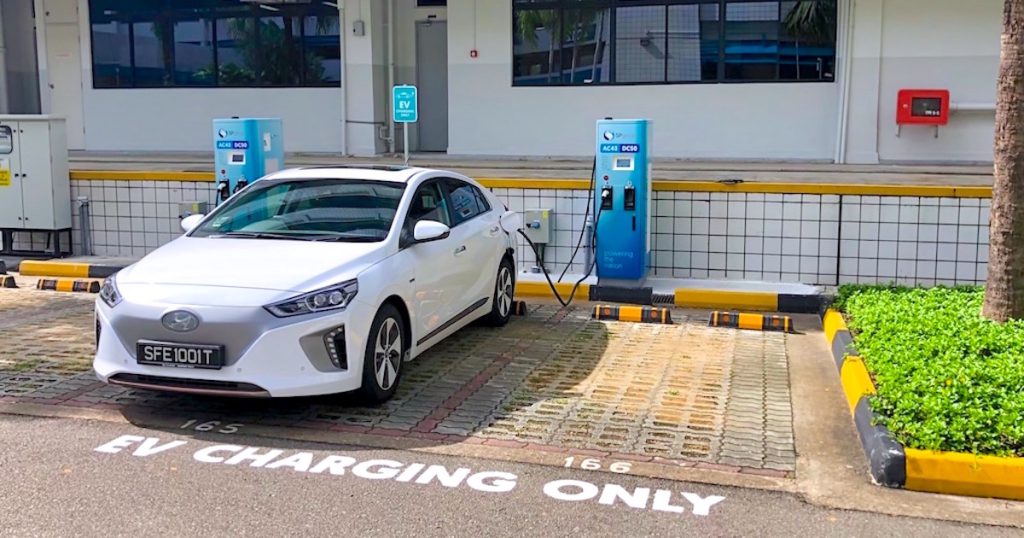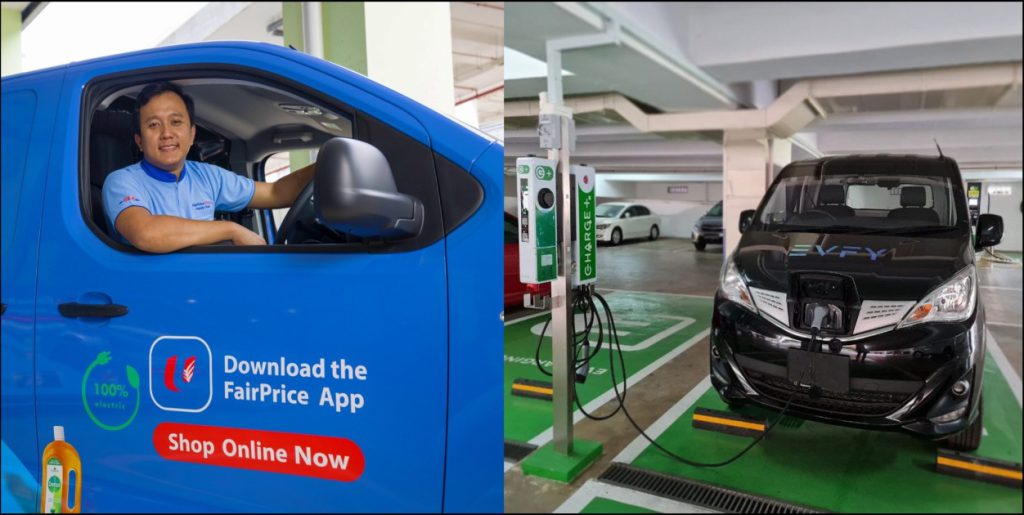Grab to raise driver commission fees to 20.18% citing GST hike – will this help or harm them?

Disclaimer: Opinions presented below belong solely to the author.
With GST slated to increase to 8 per cent in a few days, many are concerned about the additional expenses that this may entail for them.
But for Grab’s private-hire drivers, they have something extra to worry about as well. The ride-hailing giant will be passing on the increased GST cost to drivers, increasing their commission fees by 0.18 percentage points on 1 January 2023.
While other ride-hailing companies like Gojek, Ryde and Tada, are planning to absorb the impact of the GST hike, Grab has instead raised its commission fees from an already high 20 per cent to 20.18 per cent.
Grab has defended this move, stating that GST is applied to the company’s commission as its drivers are considered the company’s customers.
In a statement, Grab argued that “the way Grab operates is that our driver-partners pay us for the ride-matching service that we provide… This is why GST is applied on the commission that driver-partners pay Grab.”
New year, new commission rate, and now, new complaints
Needless to say, this ‘new year present’ is not exactly a welcome gift for drivers.
But has Grab really done anything wrong? Probably not.
The relationship between Grab and its drivers has always been an iffy one. While it is cut and dried that they are gig workers, how gig workers are classified is a different story.
Grab drivers do not fall neatly into the category of employees — they decide their own working hours, and are free to take jobs from other platforms. As such, some drivers consider themselves contractors who serve Grab’s customers.

In a The Straits Times article, one driver expressed his unhappiness at the news of Grab’s increased commission rate, and argued that “We (drivers) are not buying their (Grab’s) services”.
It’s relatively easy to understand where these drivers are coming from. Grab’s commission will eat into their earnings, but at the same time, Grab has decided not to raise fares for its customers. This means that while the rides cost the same for customers, drivers will have to pay more to Grab and keep less for themselves.
According to PwC Singapore, however, Grab is within its rights to raise its commission in response to the GST hike. Since Grab is a GST-registered business, the commission that drivers pay to Grab is subject to GST.
Previously, Grab’s commission of 20 per cent already included the prevailing GST rate of seven per cent. As such, the increased commission rate is simply a reflection of the increased GST obligation that Grab will eventually have to pay.
On the contrary, because drivers themselves are not GST-registered, the fares that these drivers collect are not subject to GST.
There is also no regulation that says that Grab must bear the cost of the GST increase, and it remains a commercial decision by platforms to pass on the GST like what Grab is doing, or to absorb it like the other players.
So if Grab’s move is within the rules, why are there complaints about what Grab is doing?
Just because you can, doesn’t mean you should
Perhaps one of the reasons why Grab is receiving flak is because their move reeks of rules-lawyering, and to some extent, bullying.
Grab’s explanation essentially amounts to telling its drivers that Grab is not willing to bear the full cost of GST, and will instead pass it on only to the drivers. Customers will not suffer from higher fares, since Grab is afraid of alienating them.
In other words, Grab is doing what it can to protect its own interests, and presenting the outcome as a fait accompli.
Evidently, it’s not easy to be in Grab’s position as the middleman. In many ways, the GST hike has put them in an impossible situation.
The company is struggling to become profitable, and earlier this year, its stock price tanked by 40 per cent. In order to become profitable, Grab needs to increase its revenues while keeping its costs down.
Naturally, this would mean that it needs to increase revenue streams from both its customers and its gig workers.
Increasing its already high fares would be a bad idea since it might drive away customers who have plenty of alternatives to turn to. Yet, sitting back and passively absorbing the GST increase might mean burning more cash that the company cannot afford.
However, Grab’s drivers are relatively powerless when compared to the company itself. Grab has the power to set fares as well as its commissions, and while drivers who are dissatisfied are free to leave anytime, leaving the platform can come at a significant opportunity cost as it means closing the door on all of the rides that Grab provides to them.

This power dynamic remains at the core of why Grab perhaps has a freer hand to act as it wishes when it comes to its drivers.
Unfortunately, it certainly is not a good look for Grab when it decides to pass on the cost of GST to its drivers while its competitors are not doing the same.
Will this move even help Grab?
Theoretically, increasing the commission rate to pass on the cost of increased GST onto drivers will help Grab on its path to profitability. Keeping costs low, after all, is one way to help bring Grab out of the red.
But what Grab’s riders and customers care about may not be the same as what Grab cares about.
Grab has already declared that all of the increased revenue from its commission hike will go to the Inland Revenue Authority of Singapore (IRAS), implying that Grab is not using the GST hike in an opportunistic manner to squeeze its drivers, but that’s cold comfort for the drivers who will see lower earnings as more of their fares go to Grab.
Grab’s commission of 20 per cent is already on the high end to start with. Gojek and Ryde currently take around 10 per cent of the fares as commission, and while Gojek has announced an impending commission hike to 15 per cent, it still falls short of Grab’s pre-hike rate of 20 per cent. Meanwhile, TADA is taking no commission at all.
With these alternatives for Grab drivers, Grab may find its drivers rapidly moving on to other platforms where they can get better deals.
We may also need to consider if Grab is remaining in the good graces of their customers as well — customers did express dissatisfaction with the reduced grace period for rides, and have also questioned if Grab charges customers more for rides to saved locations.

If drivers leave Grab, Grab may also be forced to raise prices on consumers to make up for the lost revenue, and endure another round of complaints as their customers protest against the fare hike as well.
No one wants to pay the bill for the upcoming GST hike, but Grab’s way of dealing with it exposes some serious issues that need to be dealt with. The power imbalance between Grab and its platform workers, for example, would need to be addressed.
But the elephant in the room for Grab, at least in the foreseeable future, will remain its bottom line. Many of the issues that Grab is facing are interlinked — its struggle towards profitability depends on how much it can charge customers for rides and how much it can charge drivers through commission.
That said, keeping all parties happy seems to be a difficult, if not impossible job.
For now, however, Grab has made its move, although whether its decision will help it in its quest for profitability remains to be seen.
Featured Image Credit: Kham via Reuters
Also Read: Grab may be SEA’s first decacorn, but it is not yet profitable: What is their growth strategy?
As startup fever rages on in S’pore, why aren’t more of them making waves on the world stage?

Back in 2012, when an apocalypse was still a distinct possibility, startups were nothing more than a Silicon Valley buzzword, and working for one was hardly a legitimate career.
10 years and a pandemic later, it is astonishing how much things have changed. As home to over 4,000 tech-enabled startups, Singapore has since reinvented itself into a leading startup hub with a vibrant startup ecosystem.
But while sowing the seeds of entrepreneurialism and starting a business in Singapore is easy enough, going global is an entirely different ballgame.
A city of startups

Singapore’s growth into a startup hub should not come as a surprise.
After all, no sane government would ignore the allure of the startup economy and its multiplier effect. Not only do startups create jobs and attract foreign investments, but they also encourage the innovation of new technologies, business models and ideas to reinvigorate society.
As a result, there has been a monumental push to develop a startup culture over the last few years.
Besides generous funding and business-friendly policies, an abundance of incubators, accelerators, hackathons, and pitch competitions has resulted in an explosion of startups.
If you are still in doubt, all it takes is one quick scroll on social media to realise one thing — almost everyone has become a co-founder to some degree these days.
However, are we sacrificing quantity for quality?
Despite the sheer number of startups with billions of funding between them, few have made a mark for themselves on the international or even regional level.
The challenges of going global

As a small country, Singapore has a limited domestic market characterised by a small population with a high purchasing power and a penchant for tech solutions and sustainable products.
Therefore, what translates well locally might not necessarily succeed overseas since the sample size used to test a product does not reflect the needs of the regional market.
In a sense, the many offerings provided by Singapore startups are more targeted at mature markets in Japan, Korea, and the West. But since these markets have their own startups to serve their needs, a local startup would have to offer something unique to infiltrate these markets.
Another issue hindering Singapore startups from making their way into the global market is their lack of funds.
While it might sound odd, the majority of funding is concentrated in the early stages to get new ideas off the ground. But once established, startups often find themselves in a bind — reaching a plateau, yet unable to scale and expand as the competition for late-stage funding heats up.
Lastly, there is the possibility that excessive government grants are doing more harm than good. While such funding is paramount to encourage new businesses, it inevitably leads to the rise of ‘grantpreneurs’.
Long considered a dirty little secret in the startup ecosystem, ‘grantpreneurs’ keep their companies afloat through perpetual grants. Often, they are preoccupied with proposals rather than strategies, just so they can meet the necessary milestones to qualify for more funds.
In such scenarios, there is little desire to build a viable business and even less of a chance for it to go global.
Defying the odds

Over a decade ago, Singapore was a startup backwater where one would be hard-pressed to name a homegrown startup other than Creative Technologies.
But as the startup ecosystem grows, unicorns have emerged, and more businesses are finding success beyond our shores with their bold and novel ideas.
Grab, Ninja Van, and Love, Bonito are local startups that have become regional household names by offering innovative solutions catered to the needs of the local markets.
And despite not being a manufacturing hub for mass-market products, Secretlab and Razer have achieved immense success in a niche market producing world-class gaming equipment.
Now that Singapore has built the requisite infrastructure to support startup growth, it is only a matter of time before the new generation of Singapore startups goes global.
Moreover, the borderless nature of fintech and healthtech will potentially lower the barrier of entry for local startups to enter the international market.
The only questions are, how badly do our startups want to conquer the global market, and are they willing to rise to the challenges?
Featured Image Credit: Ohmyhome
Also Read: From digibanks to robo advisors, here are 10 fast growing startups to look out for in 2023
Mandatory licenses to mobile EV charging: A closer look at the new EV Charging Bill in S’pore

In Singapore, the use of electric vehicles (EVs) is encouraged as part of the country’s efforts to reduce carbon emissions and promote sustainable transportation. To support the adoption of EVs, the government has implemented a set of regulations for charging infrastructure and EV charging services.
In November 2022, the Ministry of Transport (MOT) introduced the EV Charging Bill for First Reading in Parliament to regulate the safe charging of EVs, to ensure the provision of reliable EV charging services, and to expand the network of accessible charging infrastructure in Singapore.
This is in line with the nation’s target to deploy 60,000 charging points by 2030, and for all vehicles to be of cleaner energy by 2040.
The EV Charging Bill will establish rules and regulations that will govern the charging of EVs, and the Land Transport Authority (LTA) will be empowered with statutory powers for enforcement. This would include establishing clear technical and performance standards that all EV chargers must meet to be supplied or used.
Scope of the EV Charging Bill

The EV Charging Bill will cover two types of EV chargers: fixed chargers (including battery charge, swap stations and pantograph chargers), as well as non-fixed chargers.
Meanwhile, chargers that are exclusively designed for charging non-EVs such as personal mobility devices, power-assisted bicycles, electric vessels or electric aircrafts, will not be covered under the Bill.
To minimise the proliferation of unregulated or ill-maintained chargers which can pose safety hazards, the Bill will provide LTA with powers to regulate the supply, modification, advertisement, installation, certification, registration, use, and maintenance of EV chargers.
The Bill will require all chargers in Singapore to be installed, certified, and used in accordance with prescribed standards, which will reference standards such as Technical Reference 25 (TR25) for Electric Vehicle Charging Systems, and Singapore Standard 638 Code of Practice for Electrical Installations.
Chargers must also be registered before they can be used.
Upon registration, the registered responsible person will be issued a registration code for the charger, and must affix a registration mark on the charger. Registered chargers will also need to be inspected regularly in accordance with the relevant standards.
Where does mobile EV chargers stand in this Bill?
According to LTA, mobile EV chargers, which are relatively nascent, will be considered as non-fixed chargers.
It added that since they are currently not covered by TR25 or any international standards, mobile EV chargers will not be allowed to be used after the transitional period upon commencement of the Bill.
This raises the questions of what will then happen to mobile EV charging operators in Singapore?
Local car dealer Wearnes Automotive, which is also the official and sole distributor of Polestar EVs in Singapore, had recently started a pilot for its mobile EV charging services.

As part of the service, the firm will dispatch an electric Kangoo van retrofitted with a device from local battery maker Durapower, and a mere 10-minute charge can last about 30km.
“Our understanding [of the EV legal framework] is that suppliers of non-registered/certified chargers have six months to continue operating, which is reasonable, whether for fixed or non-fixed chargers. Our AC and DC mobile chargers are both TR25 and LNO approved, hence it should be business as usual [for us],” said Sabrina Sng, Managing Director of Wearnes Automotive.
In fact, she sees this as an “affirming step” by the authorities to broaden the charging infrastructure network, especially by mandating more chargers in new buildings and also lowering the condo approval threshold to 50 per cent.
“This would make it easier to get approval for EV charger installation at condos, a common bugbear among condo dwellers,” she said.
Sng added that problems could arise if EV charging is not properly regulated. For instance, the power supply in some buildings may not be sufficient to facilitate charger installations, which could impede the charging network development and hence, potentially slow down EV adoption.
“Chargers, if not certified or maintained, could also be incompatible with the infrastructure and hence [become] unusable,” she elaborated.
With the new Bill, Sng believes that it will help expedite the development of Singapore’s charging infrastructure, widen the network, and give consumers more assurance and confidence that there are sufficient chargers islandwide to meet their needs.
In turn, she expects to see “a more rapid rate of EV acceptance and adoption”, though she recognises that since Singapore’s EV infrastructure is still new, there’s plenty of work that needs to be done before EVs become more prevalent.
Licensing of EV charging operators
To ensure a satisfactory user experience, it is important to ensure that the public charging network is reliable.
EV charging operators refer to businesses that provide EV charging services, such as hiring out a fixed EV charger, providing battery swapping services, or renting out a non-fixed EV charger.
Under the Bill, they will be required to obtain a licence in order to provide the service, which will be valid for a fixed period and can be renewed.
Licensees will have to comply with conditions such as data sharing, purchasing of public liability insurance, and maintaining the service uptimes of their chargers in their network.
Asked to comment on this requirement, Sng feels that it is “reasonable” in order to ensure the usability of chargers belonging to EV operators who have been awarded the tender.
“Given that we are in the early stages of EV adoption, data sharing on charging behaviour and patterns would definitely help optimise the usage and manage surges in demand at peak periods,” she explained.
The Bill also provides for transitional arrangements for the industry and members of the public to comply with the legislation. Upon commencement of the Bill, existing suppliers can continue to supply non-approved EV chargers for six months.
Existing EV chargers that are not registered can continue to be used for six months after the commencement of the Bill, while existing EV charging operators can carry on their operations without a licence for 12 months after the commencement of the Bill.
MOT and LTA will work with the industry to facilitate these transitional arrangements.
A spokesperson from LTA said that LTA will continue to engage the EV charging industry and monitor the development of new and innovative charging solutions, and update its charging standards when necessary.
“LTA will also consider innovative charging solutions that are not currently covered by TR25, but which have the potential to contribute to the accessibility of our charging network in a safe manner, under the ‘Specially Authorised EV Charger’ regime. LTA will facilitate trials for such solutions should they receive applications and assess the solutions to be suitable,” added the spokesperson.
Featured Image Credit: SP Group
Also Read: EVCo to launch S’pore’s largest ride-sharing for electric commercial vehicles targeted at SMEs
Top 5 industries in M’sia with future investment potential, based on 2022 SEA funding trends

Despite all the disruptions brought on during the pandemic, 2021 had seen soaring numbers in terms of funding. In Malaysia, the total funds raised in the capital market had risen 14.22% to RM130.9 billion from the previous year.
However, the high didn’t continue in 2022, with a funding winter seemingly settling in across Southeast Asia.
This is backed by a report released by Tracxn, a global market intelligence platform. Its Geo Annual Report: SEA Tech 2022 covers key startup events and stats such as funding rounds, top markets, and more within Southeast Asia (SEA).
According to the report, funding in SEA has fallen 41% to US$11.9 billion, compared to the same January to November period in 2021.
The report also showed that the decrease is related to a drop in late-stage investments, which plummeted by 62%.

But, on the flip side, seed-stage rounds have increased by 60%, an indication that more newcomers were starting up in 2022.
Plus, Kuala Lumpur and Petaling Jaya have actually seen an uptick in the funding amount compared to 2021.
Thus, despite the overall drop in funding, here are a few of the most invested industries in SEA, and some Malaysian startups within those fields that got funding this year.
1. Food and agriculture technology
The food and agriculture technology industry is considered the best-performing sector during the January to November period in 2022. With US$1.33 billion in funding during this period, this is an increase of 68% from the same period last year.
A Malaysian foodtech startup that has received funding this year includes Nanka, a jackfruit plant-based meat brand.

Meanwhile, local agritech startup Plant Cartridge, a 500 Global-backed firm offering sustainable agriculture solutions, raised US$3 million in seed funding.
DAdvance Agarwood Solutions, an agritech company improving the yield of agarwood, has also raised around US$433,000 via equity crowdfunding this year.
2. Fintech
Fintech has seen a drop of 28% in total funding, from US$7.4 billion in January to November 2021 to US$5.3 billion in the same period in 2022.
Even so, the amount of funding received in 2022 is still the second-highest amount recorded in the sector to date.
One prime example of a local fintech company that secured funding this year is TNG Digital. In fact, according to Tracxn, TNG Digital has raised the highest amount of money out of all the startups in Kuala Lumpur this year with a US$168 million round, raised by Lazada.
TNG Digital is also regarded as a soonicorn by Tracxn, meaning it’s a “soon-to-be unicorn”.
Payd, an earned-wage access service in Malaysia, also raised US$1.7 million in seed funding this year.

JurisTech, a homegrown fintech startup offering credit management systems, is also named on the report with funding of US$49.1 million. CTOS Digital had acquired a 49% stake in the fintech startup.
Fundaztic made the list too with a US$3.7 million round. A peer-to-peer lending platform, Fundaztic had raised the amount via equity crowdfunding.
3. Enterprise applications
The third sector mentioned in Tracxn’s SEA report is enterprise applications, which saw a 7% increase in funding in 2022 as compared to the same period last year.
Enterprise applications refer to software that serves organisations rather than individual users.
StoreHub, a local cloud-based retail management platform, raised US$13.5 million in its pre-series B round this year, led by 500 Global.

The aforementioned Juristech could be considered an enterprise application as well, as it provides enterprise-class software for banks and enterprises in Malaysia, according to its website.
Another Malaysian startup in this industry is Dropee, a B2B wholesale startup that raised US$7 million this year during its series A round.
4. Ecommerce
Although ecommerce startups weren’t mentioned as a top-performing industry in the report, it’s certainly a sector that continues to bag a lot of funding locally.
Carsome, the integrated car ecommerce platform, hardly needs an introduction. The unicorn startup raised US$300 million this year, making it one of the SEA companies that saw the highest funding rounds in 2022.

RPG Commerce, a direct-to-consumer ecommerce startup known for its brands such as Thousand Miles, Montigo, and Cosmic cookware, raised US$29 million in July 2022.
With that said, the report did also mention that retail tech saw a decline in funding of 43% to US$2.7 billion in 2022, perhaps brought on by the end of the pandemic and the return of in-person retail.
5. Edutech
Also not mentioned in the Tracxn report is the edutech industry. However, we’ve seen quite a few Malaysian edutech startups that received funding this year.
A cohort member of Y Combinator’s accelerator programme, Pandai is a KL-based edutech startup that raised a total of US$2.03 million in January 2022.
ReSkills, an edutech app that helps coaches move their services online, raised US$1.5 million this year. Meanwhile, GuruLab, an online learning platform that analyses students’ performances, raised US$1 million.
Rise and falls
According to the report, the SEA region has been experiencing funding winter since the first quarter of 2022. Since then, funding has been on a declining trend.
Reasons for this may lie in inflation, supply chain disruptions, increased interest rates, and depreciating currencies.
With that said, with many seed-stage rounds in this region, it may be true that SEA’s economy has great potential in the long run.
- Read other articles we’ve written about funding here.
- Read other articles we’ve written about Malaysian startups here.
Also Read: 5 reasons to treat your employees with an office at Colony’s luxury coworking spaces
Featured Image Credit: Effendy Shahul Hamid, Group Chief Executive Officer, Touch ‘n Go Group / Wai Hong Fong and Congyu Li, co-founders of StoreHub / David Liew, founder of DAdvance Agarwood Solutions
Logistics goes green: Why it’s time to start electrifying commercial vehicles on S’pore roads

As an island state with limited renewable energy options, Singapore’s ability to achieve net-zero targets by 2050 will be contingent on innovations in low-carbon technologies and effective international collaboration.
But instead of being dependent on outside factors for progress, there is an obvious solution to take us one step closer towards our climate goals — electric vehicles (EVs).
With transport amounting to 16 per cent of our carbon emissions, a shift towards EVs will help Singapore kickstart its journey towards decarbonisation.
And considering how diesel-powered commercial vehicles contribute a disproportionate level of carbon in the transport sector, electric vans will be the key to helping Singapore turn its Green Plan targets into reality.
The road to zero

Two years after setting out the vision to phase out internal combustion engine (ICE) vehicles and have them run on cleaner energy by 2040, Singapore has introduced a string of regulations and incentives to accelerate the shift towards EVs.
So far, the efforts have yielded encouraging results. Passenger EV sales are on an upward trajectory, propelled by increasing environmental consciousness, attractive tax rebates and a growing network of charging stations that eases range anxiety.
As for public transport, electric buses and taxis have become increasingly common. According to the Land Transport Authority (LTA), half of the public bus fleet, private hire vehicles and taxis will be electric by 2030.

And now that the electrification of private cars and public transport has gained traction, it is time to turn our attention to commercial vehicles.
In the past, high upfront costs and a lack of EV options and charging infrastructure have stopped commercial fleets from going electric. But since then, the barriers hindering EV adoption have been reduced.
Besides government rebates to make electric vans more affordable, lesser need for servicing and a surge in petrol prices have made EVs a more cost-effective option in the long run.
As our EV ecosystem evolves and grows, green delivery startups such as EVCo and Evfy have emerged to offer EV rental, ride-share and last-mile logistics support.
In addition, with consumers becoming more aware of their environmental footprint, there is an expectation for businesses to embrace sustainable solutions across their supply chain.
So far, firms like DHL, Ninja Van, and FairPrice supermarket have added EVs to their delivery fleet.
Against this backdrop, the time has come for businesses, small and medium-sized enterprises (SMEs) in particular, to upgrade their logistics infrastructure and integrate EVs into their operations.
Building a more liveable city

With commercial vehicles covering a higher mileage daily than passenger vehicles, going electric can reduce our carbon emissions drastically.
And while emissions by the tonne can be an abstract concept, cleaner air and lesser noise are not since they directly affect our quality of life.
Being a densely populated city, the rumbling engines of vans delivering goods around housing estates can be a nuisance. And unlike construction work that stops after sunset, deliveries can occur round the clock.
The silent approach of EVs will therefore help tackle our noise pollution, improve our air quality, and help transform Singapore radically for the better.
Unless one is a climate change sceptic, which makes them as dangerous as anti-vaxxers, there is less and less room for businesses to justify using ICE vehicles for transport these days — that is especially so when switching to EVs makes so much economic and environmental sense.
Featured Image Credit: Car Buyer Singapore/Evfy
Also Read: EVCo to launch S’pore’s largest ride-sharing for electric commercial vehicles targeted at SMEs
S’pore’s job and salary forecast for 2023: More money and opportunities amidst talent shortage

Disclaimer: Opinions expressed below belong solely to the author.
While many are looking to 2023 with some anxiety, due to the fears of a recession that might be triggered by excessively restrictive monetary policies which have been enacted to fight inflation around the world, the labour market in Singapore should remain good to local employees.
Talent shortage
While unemployment is down to pre-pandemic levels, as many as 84 per cent of local employers report problems with finding the right talent — one of the highest ratios in the world, according to Talent Shortage 2022 report by ManpowerGroup, based on a survey of 40,000 companies across 40 selected economies.

In addition, global average remains at historic highs of 75 per cent — up from 54 per cent before the pandemic and a prevailing range of 30 to 40 per cent in the decade prior.

Here are the figures for Singapore:

This is seemingly good news for employees everywhere, but it has special importance in a place like Singapore, which acts as a global business node, with many foreign companies investing in the city-state for the long-term.
It means that manpower shortages are still unlikely to both deter new projects or draw current investors away, simply because Singapore is too important. Uncertain political future of Hong Kong and unpredictable behaviour of the government in Beijing only cements Singapore’s importance in Asia.
So, while talent appears to be in short supply everywhere we look, it has even more significant impact on the Lion City, improving bargaining power of local employees and career opportunities they may enjoy here — as long, of course, as they fulfil the criteria.
More managers than makers
At this point, I’d like to interject a word of caution, since reality is rarely even close to perfection — and it is no different in Singapore.
While there may exist many opportunities to land a good job, the number of candidates capable of filling it is also limited not only by the scarcity of people in the tiny city-state, but mismatch of talent as well.
We lack data about specific professional skills that increase the chances of landing a good, attractive position, but given the omnipresence of technology and continuous global investment in various branches of tech for corporate, industrial, logistical or retail use, it certainly makes sense to steer your career in this direction.
However, the data from the Singapore census of 2020 shows that, paradoxically, young Singaporeans are turning away from STEM fields, favouring business and administration instead:

It seems that Singaporean universities might be producing far more managers than makers, and they are the people who create new products and services. If there’s not enough of them, they have to be imported from abroad, raising demand for immigration (which remains a sensitive topic in Singapore).
In addition, lack of well-defined skills (typical in management or administration) is a competitive disadvantage, which may make Singaporeans relatively less attractive and more expensive than foreigners.
Nevertheless, across the board, locals should still see their incomes rising (on average).
Salaries in 2023 – should you stay put or move on?
2022 was, in many ways, a year of economic boom, which followed tough pandemic years. Masks were dropped in most places and people returned to work — including thousands of foreigners, boosting local economic output.
GDP growth was strong, even if we discount it for inflation, and so were the salaries. As I reported recently, the median jumped over S$5,000 — a year earlier than anticipated — and on average, Singaporeans are better off even if we account for the rising prices.
2023 is expected to bring considerable moderation to this rapid pace, with real GDP expected to grow only between 0.5 and 2.5 per cent, while inflation should slow down to at most 4.5 per cent, according to the Monetary Authority of Singapore.
Earnings growth, however, should still outpace all of them.
National Wages Council released its recommendations regarding salaries of Low-Wage Workers (LWWs – the bottom 20 per cent of resident earners) back in November, advising businesses to plan for built-in increments in wages of between 5.5 to 7.5 per cent next year.
We can use it as a guideline, as growth of incomes of LWWs has consistently outpaced the median over the past decade. In addition, we can expect real incomes to rise across the board at at least two to three per cent above the pace of inflation.
This means median incomes could grow within 5.5 to seven per cent range in nominal terms next year, while LWWs could expect as much as eight to nine per cent, when all is said and done.
That is assuming staying in your current workplace.
Moving between jobs could yield a boost of 15 to as much as 20 per cent, according to Robert Walters’ global salary survey for 2023 — and given the global war for talent, this may be your best bet to make the most of the market situation next year.
You may want to consider “shopping around” to check how much you might be worth, knowing that almost every employer is looking to hire capable people. And if you don’t succeed, you might at least learn how and what to improve to increase your chances next time.
Featured Image Credit: Getty Images
Also Read: Singaporeans work fewer hours than ever while employment rates hit an all-time high in 2022

